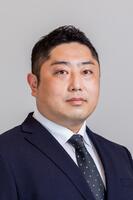経歴
-
2025年04月-継続中
オークランド工科大学 Sports Performance Research Institute of New Zealand 訪問研究員
-
2018年04月-継続中
早稲田大学 スポーツ科学学術院 准教授
-
2016年04月-2018年03月
早稲田大学 スポーツ科学学術院 准教授(任期付)
-
2013年04月-2016年03月
早稲田大学 スポーツ科学学術院 講師(任期付)
-
2011年04月-2013年03月
日本スポーツ振興センター国立スポーツ科学センター スポーツ科学研究部 契約研究員


Click to view the Scopus page. The data was downloaded from Scopus API in January 13, 2026, via http://api.elsevier.com and http://www.scopus.com .